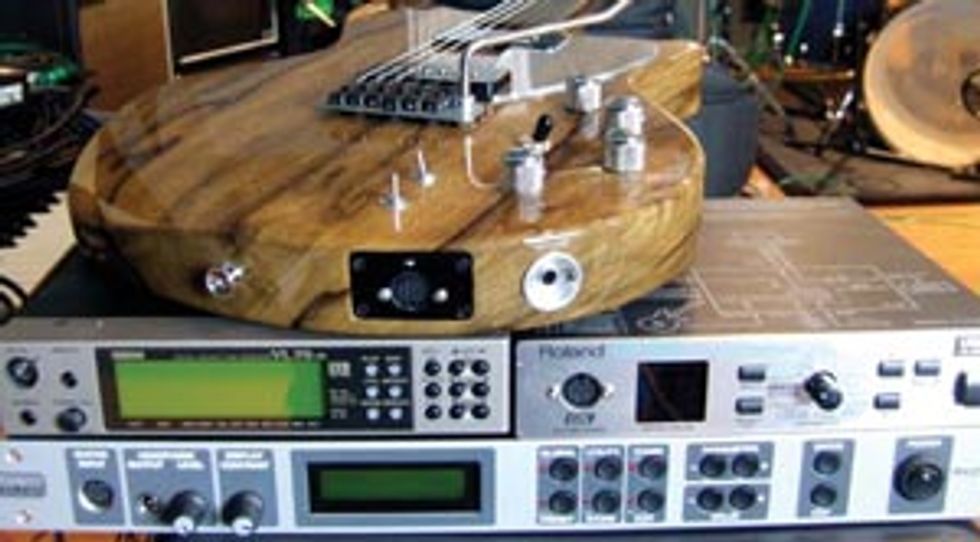Guitarists are constantly looking to expand their sonic palette, and they have always been a little envious of the broad range of sounds that keyboard players can conjure up with the touch of a button. But envy no more, because by using a MIDI-compatible guitar as a controller, we can access the same synthesizers, samplers, and other gear that keyboard players use. While there are some limitations using the guitar as a MIDI controller, it does allow access to all those great sounds. With the right gear and a little effort, guitarists can play any of the broad range of sounds available to keyboard players.
MIDI Guitar Basics
If you’re not familiar with MIDI, it stands for Musical Instrument Digital Interface, and is a digital protocol that is used to transmit performance and control data, in this case allowing you to play the guitar, but trigger sounds from a sound module, keyboard, or software instrument. There have been several different systems over the years for getting MIDI signals from a guitar, but the major hurdle in using an actual guitar (as opposed to a guitar-shaped controller, like the SynthAxe or Starr Labs Z-Tar) is that you need some sort of pitch-to-MIDI converter. Roland Corporation’s hex pickup system is the longest lasting and most popular type of interface.
The system consists of a special hex pickup, where each string has its own output, and a converter box that takes those individual strings’ signals and converts them to pitch and velocity (volume) information. There have been internal converters using hex pickups, such as the now defunct MIDI Axe system, but most systems have used external boxes that are connected to the output of the hex pickup via a special 13-pin cable. Hex pickups can be either magnetic designs or under-the-saddle piezo elements. They are available as optional add-ons for your guitar from companies including Roland, Axon, RMC, and Graph Tech, and guitars factory-outfitted with hex pickups can be had from the likes of Fender, Godin, Carvin, Wechter, and others. The companies currently making pitch-to-MIDI converter boxes include Roland and Axon, and they both offer units that are just converter boxes, as well as units with built-in sounds.
Getting Started
Okay, so you’ve got your hex pickup-equipped guitar and your pitch-to-MIDI converter, plus a sound module if your converter doesn’t include one. You’ve still got to do a little setup work before you’re ready to play. Each string has its own output, and you have to set the sensitivity of the converter to match your playing style. Too much sensitivity and you’ll get false triggering and doubled or ghost notes. Too little sensitivity, and you may not trigger the note when you want to. Most systems will let you save presets, so that you can have one setup for fingerstyle, for example, and another for when you play with a pick. 
Getting There On Time
The last subject we’ll tackle today is latency. There is a small gap of time between when you hit the note on the guitar, and when the synth actually generates the sound. In the early days of guitar synths, this time gap, or latency, was pretty big—often up to a quarter second—and required quite an adjustment to your playing style to stay on the beat. Modern systems are much faster, but you should be aware that the lower the pitch, the longer the latency, so the guitar will track better in the upper register. I’ve yet to play a system that doesn’t require some kind of compensation in order to play in time and to cleanly play each note with the proper attack and without false triggering, but if you can make those small adjustments, MIDI guitar can open up a whole new world of possibilities.
David Klausner
David Klausner has been playing guitar and bass professionally for over 25 years. He has owned his own commercial studio, and worked at major studios in New York and Philadelphia. He is a Sales Manager at Sweetwater, and can be reached at david_klausner@sweetwater.com or at (800) 222-4700 ext. 1314.

























